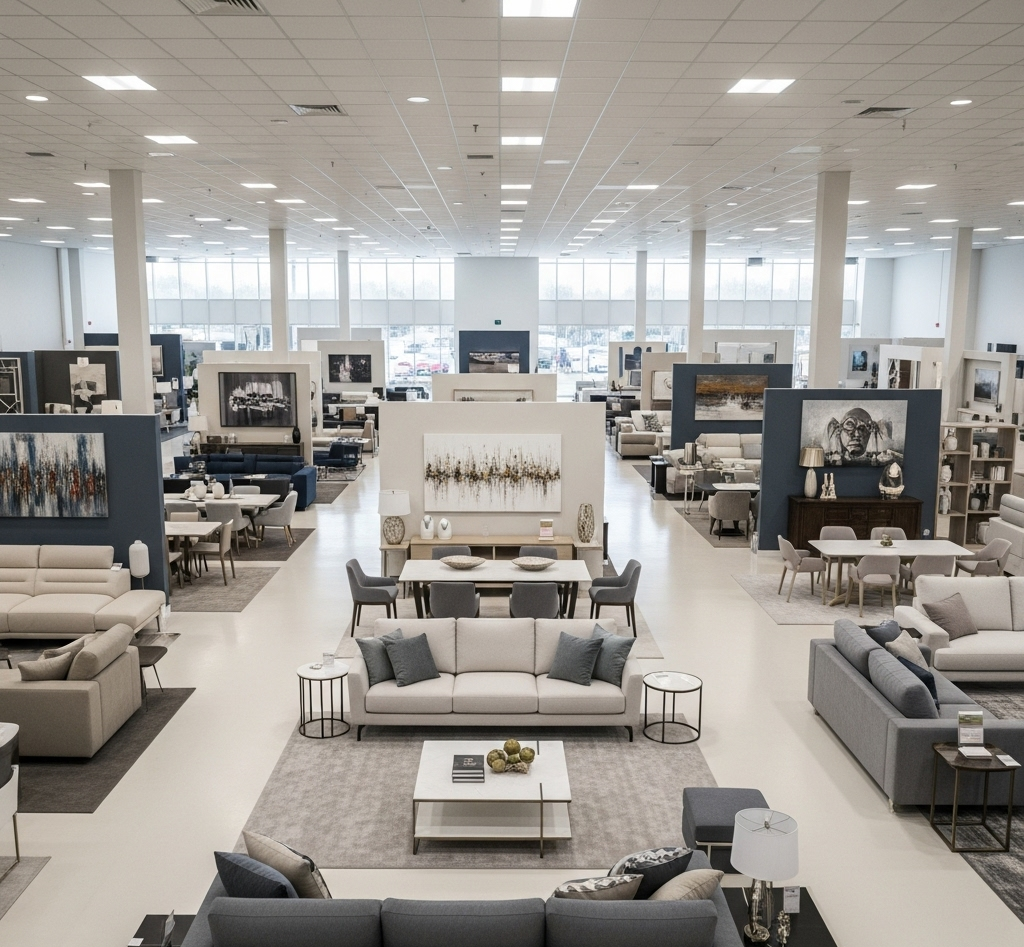
In the competitive world of furniture manufacturing, producing high-volume lines requires a delicate dance between keeping costs low and delivering visually appealing products that captivate consumers. For manufacturers aiming to scale production without sacrificing style, sourcing materials is often the make-or-break factor. High material costs can erode profit margins, while cheap alternatives might compromise the aesthetic appeal that drives sales. This blog post explores strategies to strike that balance, drawing on industry insights to help furniture producers optimize their sourcing decisions for both affordability and allure.
High-volume furniture production demands efficiency at every stage, from raw material sourcing to final assembly. Material costs typically account for a significant portion of overall expenses, often fluctuating due to supply chain disruptions, global tariffs, or environmental regulations. Premium woods like oak or exotic hardwoods offer timeless beauty and durability but come with hefty price tags, while engineered alternatives such as particleboard or MDF provide cost savings at the potential expense of perceived quality. The challenge intensifies in high-volume scenarios, where bulk orders amplify any per-unit cost overruns.
Aesthetics play a pivotal role in consumer appeal—furniture isn’t just functional; it’s an expression of style. Consumers increasingly seek pieces that blend durability with visual charm, influenced by trends like minimalist designs or biophilic elements that incorporate natural textures. However, prioritizing looks without cost controls can lead to unprofitable lines, especially in fast-casual or hospitality sectors where turnover is high and budgets are tight. Manufacturers must navigate these trade-offs by evaluating factors like material longevity, visual impact, and production scalability to ensure products remain marketable without breaking the bank.
To balance cost and aesthetics effectively, adopt a multi-faceted approach to sourcing. Here are proven strategies:
Sustainable materials like reclaimed wood or recycled metals not only reduce environmental impact but also cut costs through lower raw material expenses and appeal to eco-conscious buyers. For instance, advanced polymers and metal alloys offer durability and modern aesthetics at a fraction of the cost of traditional hardwoods, providing flexibility in design without compromising strength. In high-volume production, opting for engineered woods or natural fibers can mimic high-end looks while enabling bulk purchasing discounts.
Sourcing locally further minimizes transportation costs and emissions, supporting community economies and ensuring fresher materials for better quality control. Brands that integrate these into their lines often see enhanced market positioning, as sustainability adds a premium aesthetic without inflating prices.
Selecting reliable suppliers is crucial for consistent quality and pricing stability. Diversify suppliers across regions to hedge against disruptions, and negotiate long-term contracts for volume discounts. Top furniture-producing countries like China, Vietnam, or Poland offer competitive rates for high-volume orders, with strengths in efficient manufacturing and diverse material options.
In wicker or outdoor furniture lines, classifying products by complexity allows for tiered sourcing—basic items use affordable synthetics, while premium pieces incorporate natural weaves for aesthetic differentiation. Technology aids here too; tools like supplier management software can track costs and quality in real-time, ensuring aesthetics aren’t sacrificed for savings.
Innovation bridges the gap between cost and beauty. 3D printing and CNC machining enable intricate designs with minimal waste, reducing material usage while enhancing aesthetic precision. For high-volume lines, energy-efficient production methods lower overheads, making room for investment in visually striking finishes like staining or upholstery that elevate perceived value.
Experimenting with formulations—testing combinations of materials for optimal comfort, durability, and style—helps refine products. This iterative process ensures that cost-effective alternatives, such as laminated boards, deliver the same ergonomic and visual appeal as pricier options.
In mass production, quality assurance prevents costly rework. Invest in durable materials that withstand high usage, balancing upfront costs with long-term savings on returns and warranties. For hospitality furniture, where aesthetics must align with functionality, sourcing from suppliers with proven track records in sustainable practices enhances brand reputation and reduces waste.
Scalability is key: Start with prototypes to test material aesthetics in real-world settings, then scale sourcing for volume efficiency. This approach minimizes risks and ensures that aesthetic elements, like unique textures or colors, translate well in bulk.
Consider IKEA’s model: By sourcing affordable, flat-pack-friendly materials like particleboard and incorporating modular designs, they maintain low costs while offering customizable aesthetics through finishes and accessories. High-end brands like those in custom furniture navigate costs by using premium alloys for strength and reclaimed woods for unique appeal, justifying higher prices with exclusivity.
Best practices include:
Conclusion: Achieving Harmony for Profitable Production
Balancing cost and aesthetics in sourcing for high-volume furniture lines isn’t about compromise—it’s about strategic synergy. By embracing sustainable alternatives, forging supplier partnerships, and leveraging technology, manufacturers can produce lines that are both economically viable and visually compelling. In a market where consumers demand value without sacrificing style, mastering this balance can lead to sustained success and innovation. If you’re in the furniture industry, start auditing your sourcing today—what small change could transform your bottom line?
© 2025 Lasso Supply Chain Software LLC
Get instant access to our report on the Top Procurement Trends of 2025 by filling out the form below.

Get instant access to our report on the Top Procurement Trends of 2025.